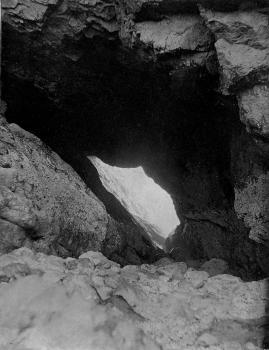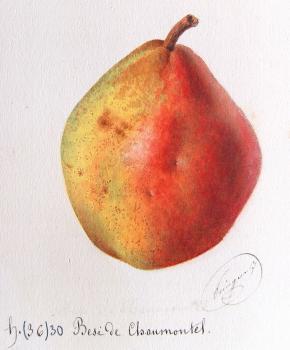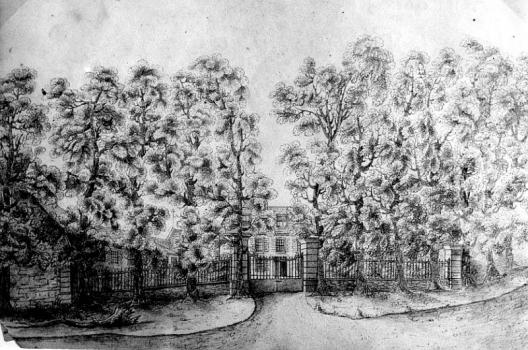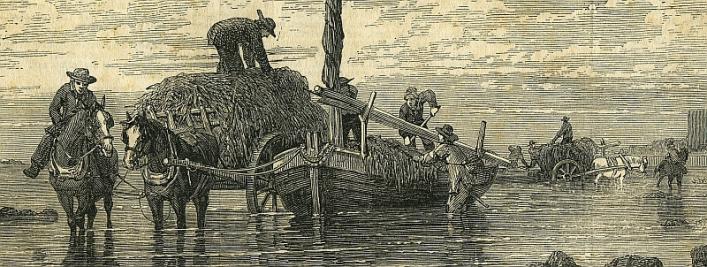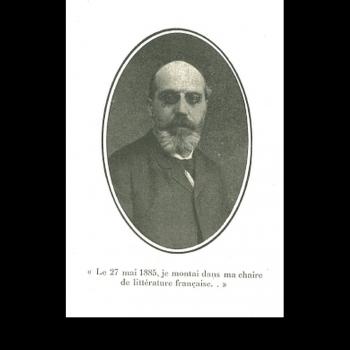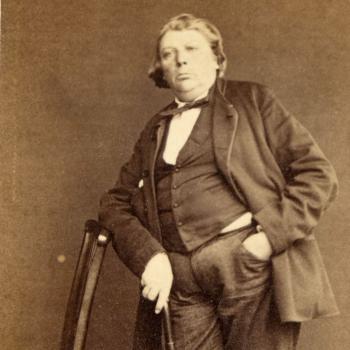An extract from the Reverend James Cachemaille's fascinating guide to his adopted home, translated from the French by Louisa Harvey. How his friend the Seigneur discovered the Gouliot Caves, once a famous tourist destination, and a description of their 'Chimney' souffleur in a gale. The photograph of the caves is part of the Priaulx Library Collection and dates from 1900.
'There is a pear which is peculiar to these islands, the Chaumontel, which grows to an extraordinary size, and sells very frequently for a shilling each for exportation.' From Cochrane's Guide to the Island of Guernsey, 1826. 'Guernsey supplies to London, besides granite pavement and chaumontelle pears, megalithic theories and watercolour paintings.' The Channel Islands Magazine, May, 1853. The watercolour is from Alphonse Mas' Le verger (The kitchen garden), 1865.
From the second half of a long but entertaining two-part article from the Dublin University Magazine of 1846. 'Let us now hasten to the proper subject of this paper, the state of society in Guernsey.'
The generosity of the Seigneur of Sark, Peter Le Pelley, from one of the two books about the island written by his great friend, the Reverend J L V Cachemaille, for many years the vicar of Sark. In 1860, the diary of the former 17th-century Sark minister, Elie Brėvint, was found in a loft in Sark. Cachemaille was inspired by this to investigate the archives of the Seigneurie and to write a series of articles based upon what he found, which were translated by Louisa Harvey and published in the Guernsey Magazine. From this was published the Descriptive Sketch, published by Frederick Clarke, and then republished in 1928. See Ewen & De Carteret, The Fief of Sark, The Guernsey Press, 1969. The illustrations are from the Library Collection, the drawing showing the Seigneurie in Sark in Le Pelley's time.
An excerpt from the Magasin Pittoresque, 17, of 1849: 'Les Iles Anglaises de la Manche.'
From Redstone's Royal Guide to Guernsey, written by Louisa Lane Clarke, who produced a new edition in 1856 following Queen Victoria's visit to Guernsey. A rather rosy description of vraicing—the gathering of wrack seaweed—which was in fact a highly competitive scramble for a valuable and free commodity, much prized by the islanders.
Written by Louisa Lane Clarke for Redstone's Guide to Guernsey, first published in 1841. A copy of this Guide was given to Queen Victoria when she visited the island, and it was retitled Redstones' Royal Guide. This extract is from the fifth edition, published in 1856.
5th July 2017
An interview with, and the obituary of, 'the oldest man in the island,' Thomas Mauger Gore, carpenter and builder, who helped Victor Hugo realise his vision at Hauteville House and especially at Hauteville II, Juliette Drouet's house in Guernsey. Obituary from The Star of Tuesday March 6, 1928, interview in the same newspaper, July? 1927. Part of the Victor Hugo and Guernsey project. [By Dinah Bott]
16th June 2017
The Parisian Paul Stapfer was born in 1840 and graduated in Classics in 1860. In 1866 he joined the staff at Elizabeth College, Guernsey, to teach French. He calculated that this employment would give him time to work on his doctorate in English literature, and that he could thus both improve his English and observe the doings of Victor Hugo. He was the author of a significant book of memoirs of Victor Hugo, Victor Hugo à Guernesey: souvenirs personnels. This is part of the Victor Hugo and Guernsey project. [By Dinah Bott]
16th June 2017
When the French government declared an amnesty in August 1859, the majority of political exiles returned to France. Victor Hugo announced that he would return to his homeland only when liberty returned there; he would not accept the amnesty. His friend Kesler pursued the same policy and remained in Guernsey until his death in 1870. This is part of the Victor Hugo and Guernsey project. [By G Stevens Cox and D Bott]

